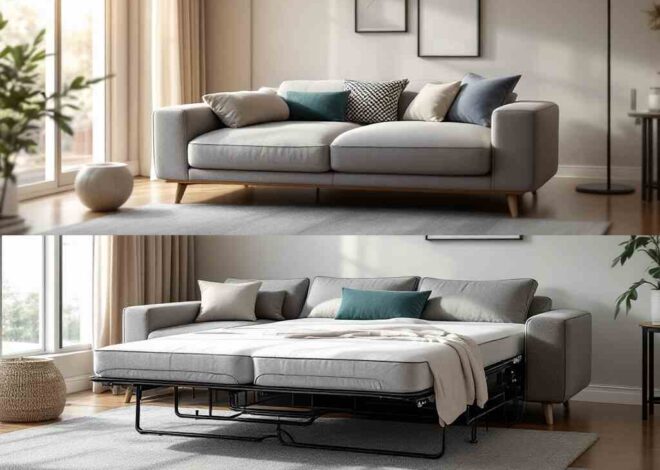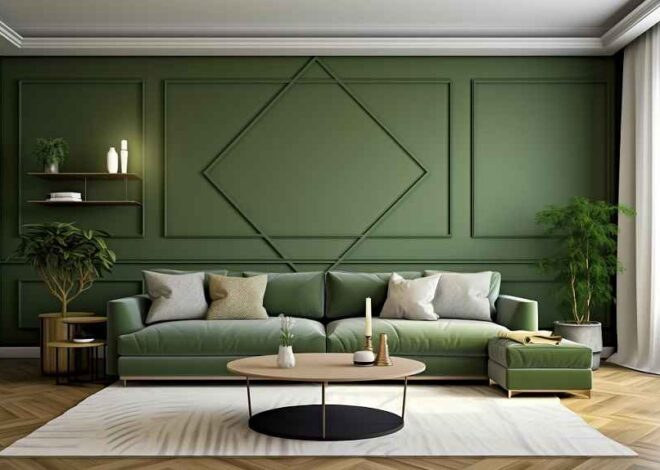
Benefits of Using Mirrors in Interior Design
Mirrors have long been a popular decorative element in interior design. But beyond just aesthetics, incorporating mirrors into a space can provide some powerful benefits that enhance the overall look and feel of a room. In this article, we’ll explore the many advantages of mirror decor and how mirrors can be strategically used in interior design.
From creating the illusion of more space to amplifying natural light, mirrors offer versatility in both form and function. By understanding the unique ways mirrors interact with interior surroundings, designers can take advantage of their reflective qualities to manipulate perception, light, and visual interest in a room.
Let’s look at some of the key benefits of using mirrors in interior design and decoration.
The Illusion of Space
One of the most common reasons designers use mirrors is to make a room feel larger and more spacious. Strategically placed mirrors can create the illusion of a bigger area by reflecting light and images. The mirror gives the impression of seeing through to another room, making the space seem almost twice as big.
Using Mirrors to Enhance Small Spaces
In smaller rooms and apartments, a mirror can help open up the space visually.
- Hang a large mirror opposite a window – this will give the effect of seeing outside, making the room feel more expansive.
- Place a mirror near an interior doorway or at the end of a hallway to create depth and the illusion that the area continues further.
- Use mirrored closet doors in bedrooms to make the room feel larger.
Maximizing the Illusion in Large Rooms
Mirrors can also help break up large, open spaces by creating the illusion of defined spaces within a bigger area.
- Use a large mirror as a room divider, reflecting light from windows to make the room brighter.
- Line an entire wall with mirrored panels to create the illusion of being surrounded by more space.
- Strategically place multiple mirrors to reflect activity areas and create defined “zones” within an open floor plan.
Enhancing Natural Light
Mirrors don’t just reflect images – they also reflect light sources like windows and skylights. Positioning mirrors across from or near natural light sources allows the mirrors to amplify and distribute light around a space. This can help brighten up dark corners or rooms with limited windows.
Bouncing Light Around the Room
Angling mirrors across from windows causes light to bounce off the reflective surface, reaching areas that might otherwise be dim. This helps enhance the ambiance and perceived brightness of the space.
Simulating Natural Light
In interior rooms without windows, such as hallways or laundry rooms, hanging a mirror opposite the doorway can reflect light entering from other rooms. This simulates natural light, making the dark space feel more open and airy.
Maximize the Sun’s Movement
Positioning mirrors to catch light from a window or skylight at different times of day can help maximize sunlight as the sun’s position shifts. Angling multiple mirrors allows more light to enter the space from morning to evening.
Creating Focal Points
The eye is naturally drawn to reflective surfaces. Mirrors can be used strategically as focal points to highlight specific areas, architectural features, or decorative elements in a room.
Drawing Attention to Artwork
Hanging artwork directly over a console table and using a mirror as the backdrop will create a focal vignette while also making the piece seem larger.
Accentuating Design Elements
Place mirrors above fireplace mantels, behind shelves or television units, or near other built-in architectural details to accentuate these features. The mirror enhances and repeats the lines and colors of the design elements.
Oversize Mirrors Make a Statement
An oversized, ornate mirror can become the dazzling centerpiece of a room. Use framing, placement, and lighting to make the mirror the star of the space.
Versatility in Design Styles
From traditional to modern and everything in between, mirrors can complement and enhance a broad range of design aesthetics.
Traditional Elegance
Ornate, gilded frames and leaning cheval mirrors give a classic, elegant feel to traditional décor.
Modern Chic
Minimalist mirrors with sleek, metal frames or clean-lined rectangular mirrors match well with contemporary design.
Rustic Warmth
Round or oval mirrors with simple wooden frames complement rustic styles nicely.
Eclectic Display
Incorporate mirrors of different shapes, sizes and styles to add reflective interest to eclectic spaces.
Practical Benefits
Beyond just visual appeal, mirrors also serve many practical functions in interior spaces.
Getting Ready Spaces
Strategically place mirrors in entryways, bathrooms and bedrooms so occupants can quickly check their appearance before leaving home.
Simulating Windows
In rooms without exterior windows, hanging a large mirror can mimic the look and feel of having a window by reflecting light and creating views.
Supervision for Safety
Parents can use mirrors to discreetly monitor young children playing in another part of a room while doing household chores.
Space-Saving Solutions
Mirrored cabinets, headboards and closet doors help maximize storage while reflecting light and giving the illusion of more space.
Types of Mirrors
Mirrors come in an array of shapes, sizes and frames to serve different decorating needs.
Shapes
- Rectangle – The most common, versatile shape that comes in many sizes. Pairs well with most décor.
- Oval – A softer shape that adds a more fluid, organic feel.
- Circle – Creates a focal point and feels more contemporary. Can highlight architectural features.
- Octagon – Adds geometric interest. Its eight sides reflect light in interesting patterns.
Sizes
- Small – 12″x16″ and under work well grouped together or in tight spaces.
- Medium – 16″x24″ to 20″x40″ are common, everyday mirror sizes.
- Oversized – 40″x60″ and larger make dramatic statements and focal points.
Frames
- Ornate gold/silver frames – Elegant and decorative for traditional spaces.
- Simple black/wood frames – Clean and understated for modern, minimalist rooms.
- Frameless – Sleek, contemporary look. Puts the focus on the reflection.
Placement and Arrangement
Proper mirror placement helps enhance the light and ambiance of a room. Follow these tips:
- Hang mirrors at eye level for utility. Raise the mirror higher to feel more decorative.
- Anchor larger mirrors visually by placing them between two smaller mirrors or decorative items.
- Angle mirrors to bounce light into dim corners or reflect views of windows or architectural details.
- Place groups of mirrors together to create interesting repetitive visuals and make a collection feel cohesive.
- Flank windows with mirror panels to amplify incoming sunlight.
Maintenance and Care
To keep mirrors looking their reflective best:
- Clean mirrors with a damp microfiber cloth and either glass cleaner or mild dish soap diluted with water. Avoid abrasive cloths and cleaners.
- Use protective wax on antique or ornate frames to limit damage and aging over time.
- Keep mirrors out of direct sunlight to prevent fading or damage to frames.
- Check for loose screws, damaged frames, or missing clips that could compromise safety.
- For moisture prevention, use a sealant specially made for mirrors around the edges.
Conclusion
Adding mirrors to interior spaces provides a variety of benefits beyond simply adding reflective surfaces. Mirrors can help enhance light, create illusions of bigger spaces, provide focal points and versatility in design, and serve practical functions.
With so many possibilities, get creative and don’t be afraid to experiment with imaginative mirror arrangements and placements. Reflect on how to maximize mirrors to amplify the look and feel of any room.
What are your favorite ways to use mirrors in home décor? Share your mirror decor ideas and experiences


